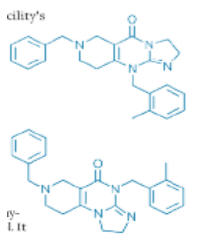Cancer researcher Wafik S. El-Deiry of Pennsylvania State University and Penn State Milton S. Hershey Medical Center and colleagues found TIC10 in a search of a free National Cancer Institute database and pinpointed its anticancer activity.
They found that the compound stimulates gene expression of a tumor suppressor protein called TRAIL. TIC10 stands for TRAIL-inducing compound 10.
The Penn State group patented the compound with the top structure:

See U.S. 8673923.
Penn State further licensed the compound to Oncoceutics, a company founded by El-Deiry. The compound appears promising against glioblastoma, prostate cancer, melanoma, sarcomas and lymphoma. Oncoceutics has initiated Phase I/II clinical trials.
Kim Janda of the Scripps Research Institute and her coworkers became interested in TIC10 for use in anticancer combination therapy. When they synthesized the patented structure they found it to be biologically inactive. They obtained a sample of TIC10 from NCI and it was active.
X-ray crystallography and total synthesis confirmed that TIC10 actually has the bottom structure. Scripps has applied for a patent on the correct structure and has licensed the compound to Sorrento where Janda is a director.
The future of this promising compound may depend upon the ultimate ownership as determined by the courts and/or a collaboration between Oncoceutics and Sorrento.





Comments